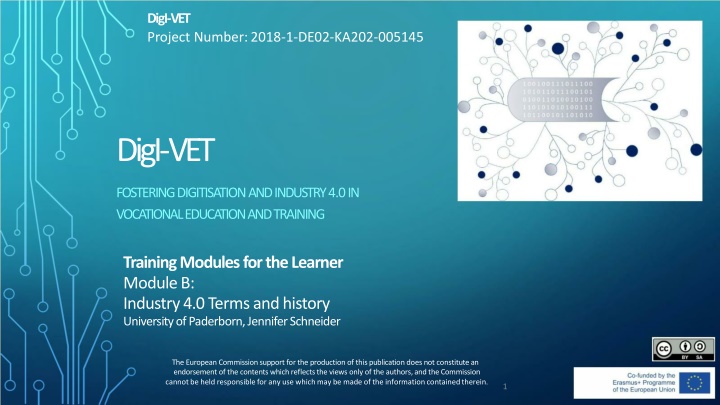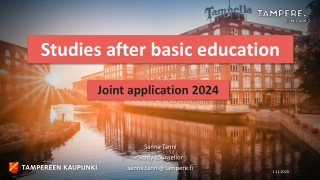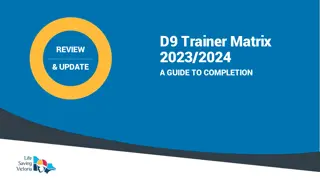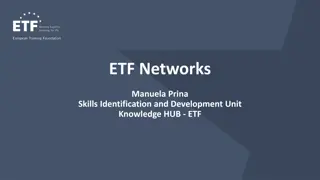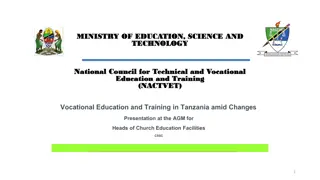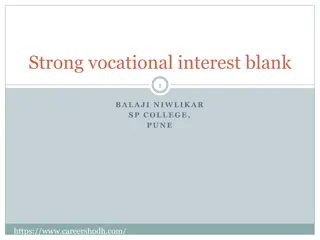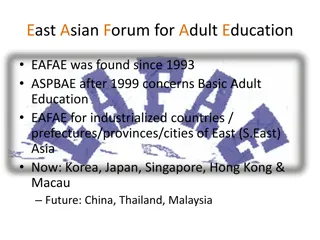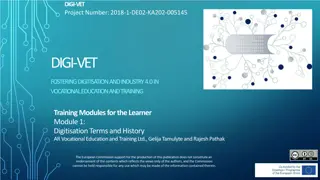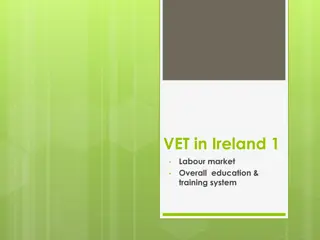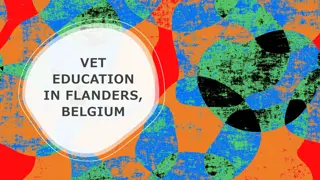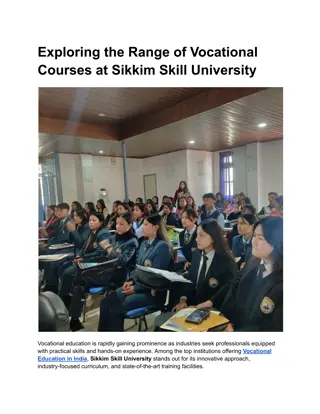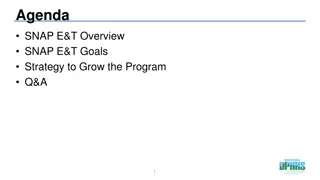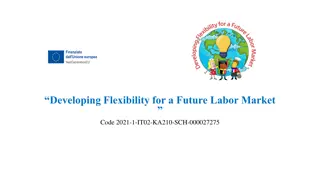Industry 4.0 - Revolutionizing Vocational Education and Training
The evolution of Industry 4.0 revolution and its impact on vocational education and training. Discover the history, key drivers, and technological advancements shaping the future of industries.
Download Presentation

Please find below an Image/Link to download the presentation.
The content on the website is provided AS IS for your information and personal use only. It may not be sold, licensed, or shared on other websites without obtaining consent from the author.If you encounter any issues during the download, it is possible that the publisher has removed the file from their server.
You are allowed to download the files provided on this website for personal or commercial use, subject to the condition that they are used lawfully. All files are the property of their respective owners.
The content on the website is provided AS IS for your information and personal use only. It may not be sold, licensed, or shared on other websites without obtaining consent from the author.
E N D
Presentation Transcript
DigI-VET Project Number: 2018-1-DE02-KA202-005145 DigI-VET FOSTERING DIGITISATION AND INDUSTRY 4.0 IN VOCATIONAL EDUCATION AND TRAINING Training Modules for the Learner Module B: Industry 4.0 Terms and history University of Paderborn, Jennifer Schneider The European Commission support for the production of this publication does not constitute an endorsement of the contents which reflects the views only of the authors, and the Commission cannot be held responsible for any use which may be made of the information contained therein. 1
Agenda of Module B: Digitisation T erms and history 1. Mechanical loom and history of Industry 4.0 2. Industry 4.0 2.1 Task - Video 2.2 Task - Multiple Choice Task 2.3 Task Multiple Choice Task 2
1. Mechanical loom and history of Industry 4.0 Second Industrial Revolution (beginning of the 20th century) First revolution (end of the 18th century) - happens during the introduction of conveyor belt, mass production -mechanical production on the basis of water and steam. - Henry Ford and Frederick Taylor Third revolution (middle of the 20th century) - digital automation of production by means of electronics and information technology (IT) system "Dieses Foto" von Unbekannter Autor ist lizenziert gem CC BY-SA Link: https://elektrohelden.rexel.de/cfs- file/__key/communityserver-wikis- components-files/00-00-00-00- 71/0_5F00_Industrie_5F00_Revolution.jpg 3 (Lasi, H., Fettke, P., Kemper, H. et al., 2014) "Dieses Foto" von Unbekannter Autor ist lizenziert gem CC BY-SA
1. Mechanical loom and history of Industry 4.0 Fourth revolution- Industry 4.0 (last decades of the 20th century) - rise of autonomous robots, contemporary automation, cybersecurity systems, the internet of things, the internet of services, etc. - one of the key driver: Industrial robots "Dieses Foto" von Unbekannter Autor ist lizenziert gem CC BY-SA Link: https://elektrohelden.rexel.de/cfs- file/__key/communityserver-wikis- components-files/00-00-00-00- 71/0_5F00_Industrie_5F00_Revolution.jpg 4 (Lasi, H., Fettke, P., Kemper, H. et al., 2014)
2. Industry 4.0 Industry 4.0 One of key drivers: Industrial robots - becoming more productive, flexible, versatile, safer, and collaborative and - are thus creating an unprecedented level of value in the entire ecosystem. - Smart factories (heart of Industry 4.0) , will take on board information and communication technology for an evolution in the supply chain and - production line that brings a much higher level of both automation and digitization. Figure: Technologies Related to Industry 4.0 by Bahrin et al.; 2016. 5 (Lasi, H., Fettke, P., Kemper, H. et al., 2014)
2.1 Task TASK Please watch the following video about the history of Industry 4.0. Please take some notes! 6
2.1 Task TASK https://www.youtube.com/watch?v=RPC7yo99Nxs 7
2.2 Task TASK Please answer the next H5P.org tasks! 8
[h5p id="1"] 2.2 Task TASK 9
[h5p id="1"] 2.3 Task TASK 10
Agenda of Module A: Digitisation T erms and history Bahrin, M. A. K.; Othman, M- F.; Azli, N. H. N.; Talib, M. F. ( 2016): INDUSTRY 4.0: A REVIEW ON INDUSTRIAL AUTOMATION AND ROBOTIC. Jurnal Teknologi , Centre for Artificial Intelligence and Robotic, Universiti Teknologi Malaysia, Kuala Lumpur, Malaysia. Link: https://www.researchgate.net/profile/Fauzi_Othman/publication/304614356_Industry_40_A_review_on_industria l_automation_and_robotic/links/57ac15aa08ae3765c3b7bab8.pdf Geisberger E, Broy M (2012) agendaCPS: Integrierte Forschungsagenda Cyber-Physical Systems. acatech, M nchen H. Kagermann, W. Wahlster, J. Helbig. 2013. Recommendations For Implementing The Strategic Initiative Industrie 4.0: Final Report of the Industrie 4.0 Working Group. Ulrike Findeklee: Acatech National Academy of Science and Engineering. Lasi, H., Fettke, P., Kemper, H. et al. (2014): Industry 4.0. Bus Inf Syst Eng6, 239 242. https://doi.org/10.1007/s12599-014-0334-4 Willliam M. D. (2014): Industrie 4.0 - Smart Manufacturing For The Future. Berlin: Germany Trade & Invest. Online Source: YouTube: https://www.youtube.com/watch?v=RPC7yo99Nxs Picture: "Dieses Foto" von Unbekannter Autor ist lizenziert gem CC BY-SA Link: https://elektrohelden.rexel.de/cfs-file/__key/communityserver-wikis-components-files/00-00-00-00- 71/0_5F00_Industrie_5F00_Revolution.jpg 11
CONTACT Universit t Paderborn Department Wirtschaftsp dagogik Lehrstuhl Wirtschaftsp dagogik II Warburger Str. 100 33098 Paderborn Prof. Dr. Marc Beutner Tel: Fax: E-Mail: paderborn.de +49 (0) 52 51 / 60 - 23 67 +49 (0) 52 51 / 60 - 35 63 marc.beutner@uni- http://www.upb.de/wipaed http://digivet.eduproject.eu/ The European Commission support for the production of this publication does not constitute an endorsement of the contents which reflects the views only of the authors, and the Commission cannot be held responsible for any use which may be made of the information contained therein. 12
